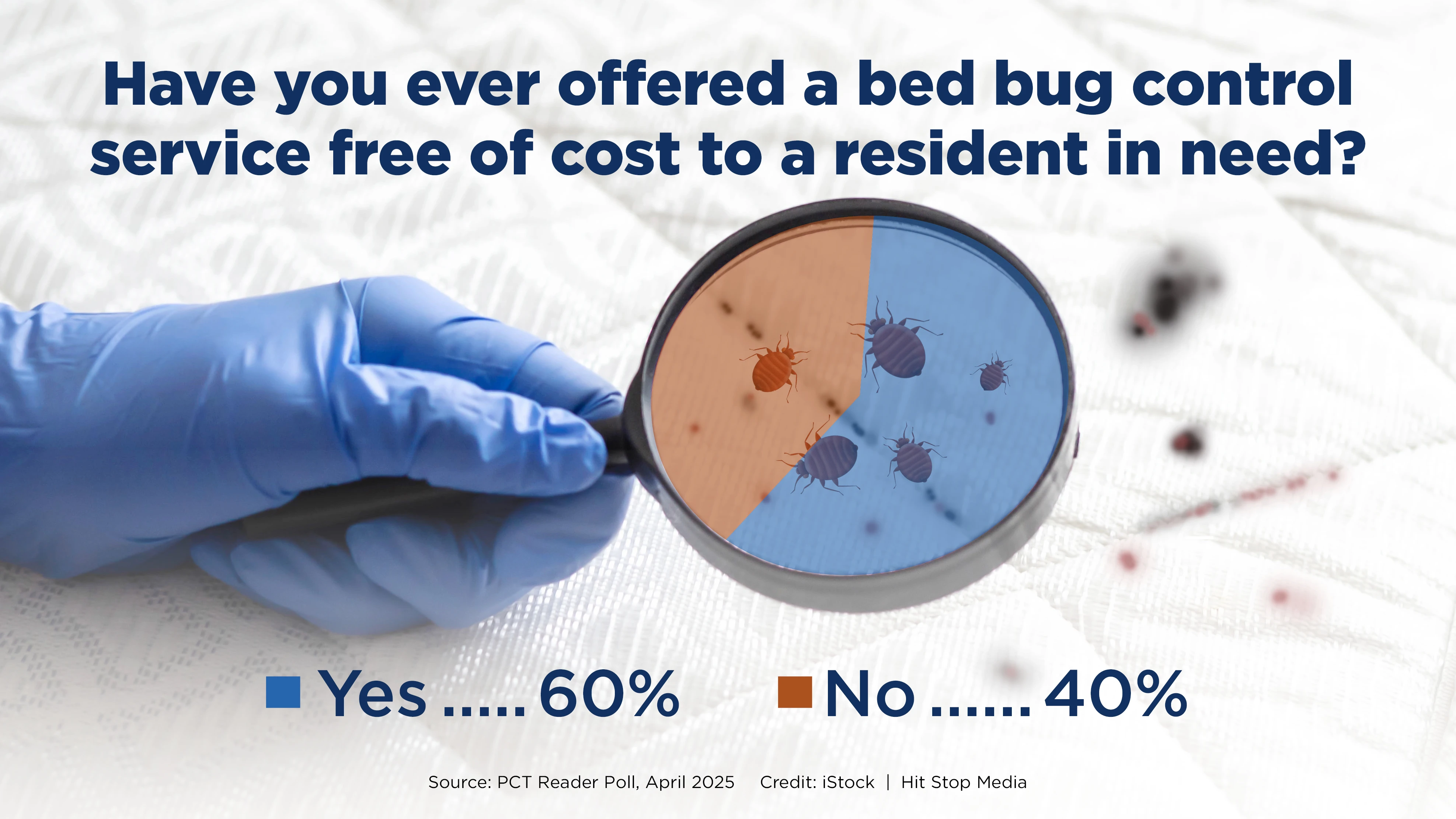Despite the advent of new active ingredients and new technologies, termites remain the No. 1 problem for our industry. Companies are investigated and sued for failing to protect structures from these inconspicuous and highly destructive pests. Termite damage claims top the chart for regulatory and consumer protection agencies.
It’s human nature to try to find something or someone to blame for failures. Typically, our initial response is to look at the product and try to determine if it failed. Next we look at the technician to see what he or she may have done wrong. Rarely do we scrutinize ourselves (owners, managers and supervisors) to determine what we may have done wrong.
We need to start at the top and work down, not at the bottom and work up. We have a variety of products, e.g., liquid repellents, liquid non-repellents, baits and wood treatments, that work.
Termite management is not only physically but intellectually demanding and it should only be entrusted to those technicians who understand the complexity of termite biology, habits and control. The capabilities of technicians entrusted with the responsibility for termite control are a reflection of how much time we invest in their training, as well as the support we provide them.
The following are fundamental elements that I feel are essential in minimizing termite control failures:
INSPECTIONS. Identification. Technicians should be trained to recognize wood-destroying insects and their damage. Typically, technicians are trained to recognize wood-destroying insects — which is great if they are fortunate enough to collect a specimen. The true measure of expertise is recognition of damage and being able to differentiate between termites and wood-boring beetles. Geographic distribution (e.g., "It can’t be a drywood termite — they don’t occur here.") is not a reliable method of identification.
Construction. Insect and damage identification is a piece of cake compared to knowledge of construction. The complexity of construction varies throughout the country. In the South, most homes are slab-on-grade, whereas further north, most homes have basements. Older homes may have rubble foundations, whereas newer homes may have wooden or foam block foundations. Structural insulation that looks like concrete or plaster has proven to be extremely problematic. Technicians should be trained to recognize common construction features and their relationships to successful termite control.
Conducive Conditions. A study conducted by Syngenta Professional Products (then Zeneca) several years ago dramatically demonstrated that water in and around structures was the conducive condition overwhelmingly associated with termite control failures. These conditions are frequently overlooked, particularly by technicians who do not use moisture meters. Technicians should fully appreciate the relationship between water, structures and termite infestations.
Tools. Besides the basic tools (e.g., probe, flashlight) there are a variety of detection devices (e.g., acoustical, infrared, microwave, dogs and gas) available to assist in pinpointing areas of infestation. For the money and the added benefit of detecting conducive conditions, my device of choice is a moisture meter. A moisture meter can be used to determine areas of likely activity and the feasibility of aerial colonies. Technicians should be trained to properly use the meter and understand the implications of their findings.
DOCUMENTATION. In the absence of documentation (graphs, notes, photographs), termite control is doomed to failure. Termite control failures are not single events and generally require long-term efforts until they are resolved. Documentation that records treatment, areas of activity, conducive conditions and other observations, is essential to resolving chronic infestation problems and should be updated at each service. Digital photography can be a useful form of documentation and can assist in training.
It is important to note changes, e.g., additions, decks, landscaping and excavation, to every property over time. These changes can create conducive conditions and/or disrupt barrier treatments and baiting/monitoring stations.
TREATMENT. I remain a firm believer in full label treatments for pre- and post-construction treatments with liquid termiticides. Research supports the contention that termiticides degrade over time, thus the more that we can get in the ground the longer the treatment can be expected to last. For the most part, factors affecting degradation are unknown so it becomes extremely difficult to predict how a product will perform over time. Thus, documentation in your specific geographic area becomes critical when evaluating product performance.
For baiting programs, maintenance and frequent monitoring are essential. The success of these programs is only as good as the experience of the technicians and frequency of service.
MONITORING. Thorough and comprehensive inspections should be conducted every year. As previously discussed, the results of the inspection should be thoroughly documented, including an updated graph.
Another form of monitoring frequently overlooked is quality assurance. Observing technicians performing various services can be enlightening. What better opportunity to learn something new or correct a problem. Review records of problem accounts as well as routine accounts to ensure that oversights are not occurring and documentation is appropriate. This type of oversight frequently detects deficiencies and corrects problems before they surface.
When we make assumptions about termites we run the risk of allowing them to make an ASS of U and ME.
The author is technical director of American Pest Management, Takoma Park, Md. He can be reached at 301/891-2600 or rkramer@pctonline.com.
WANT MORE?
Enter your email to receive our newsletters.

Explore the February 2003 Issue
Check out more from this issue and find your next story to read.
Latest from Pest Control Technology
- Target Specialty Products, MGK Partner for Mosquito Webinar
- Cockroach Control and Asthma
- FORSHAW Announces Julie Fogg as Core Account Manager in Georgia, Tennessee
- Envu Introduces Two New Innovations to its Pest Management Portfolio
- Gov. Brian Kemp Proclaimed April as Pest Control Month
- Los Angeles Ranks No. 1 on Terminix's Annual List of Top Mosquito Cities
- Kwik Kill Pest Control's Neerland on PWIPM Involvement, Second-Generation PCO
- NPMA Announces Unlimited Job Postings for Members





